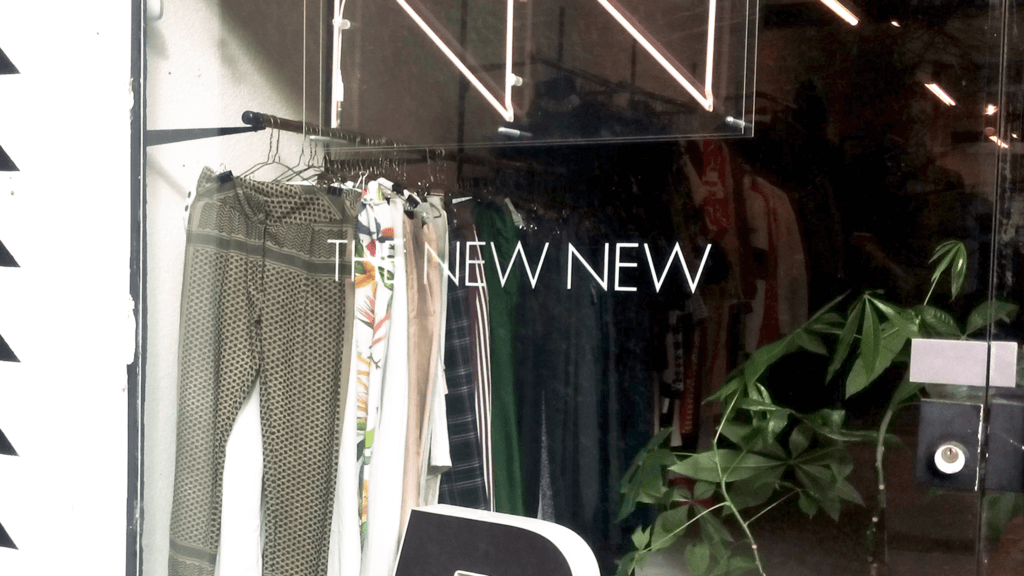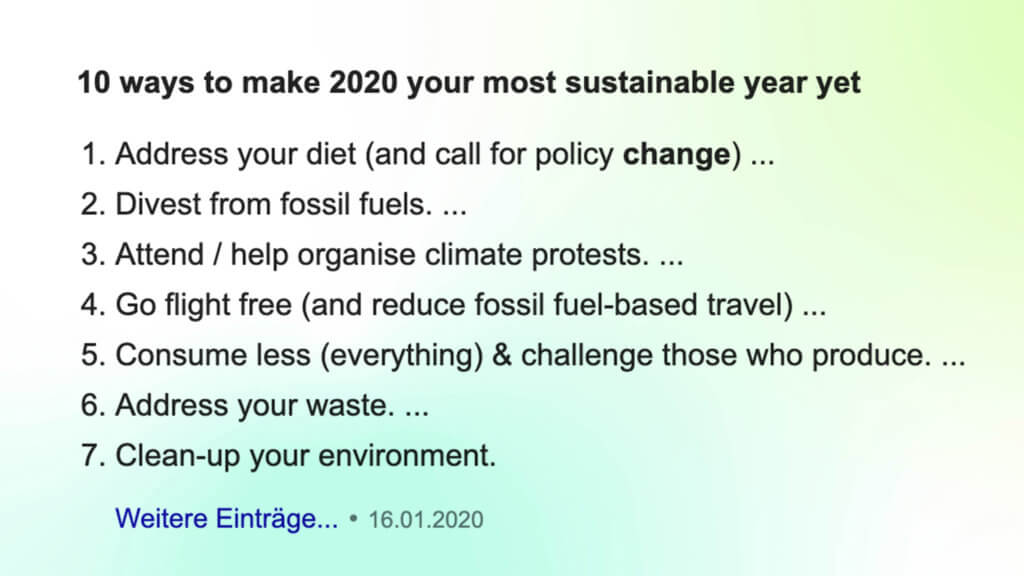These days, in the dawn of a new decade, trend reports outline possible futures and scenarios for every industry. The Dutch trend researcher Li Edelkoort outlines the relevant trends in the fashion and lifestyle industries. In her forecast, she sees bigger shifts influenced by our current global issues like climate change.
Today, consumers are increasingly conscious about the true cost of cheap fashion, its environmental effects and their own motivations to buy. This growing mindfulness about buying decisions and their impact, in general, is a sign of a broader change.
Consumers are more than followers: they are human beings looking for connection, sharing their experience and trying to find happiness. This empowers them to act accordingly and choose better. A growing number of people are ready to change their behavior for their own health, their happiness – and ultimately for our planet.
Trends and the consumer
For trends in Fashion and lifestyle, Li Edelkoort has been one of the top trend-spotters for more than four decades. With trend books and consulting services, her predictions help brands like Prada or Zara to anticipate customer desire. As she gives current feelings a voice, her intuitions have proven right – or self-fulfilled – time and again. Her forecast for the coming decade is very insightful with consideration of these global issues. Some aspects she outlines even seem to express a shift in the values that inform buying decisions now and in the future.
Fashion, however, is just a part of that picture: It is no longer about the length of a skirt or the color of the year. With her Anti-Fashion Manifesto in 2015, Edelkoort has proclaimed the death of the fashion industry. She spoke up about the way we live, buy and sell, about the way we do business. She expressed current feelings and ideas that are in the air or on social media and that many people share. 'The consumer doesn’t see the point anymore,' she says. 'Wake up, people!'
Our common ground
There is a common theme throughout the different aspects of her predictions: consumers get increasingly tired of the 'bigger, better and faster' style of consumption and are ready to make radical lifestyle changes. After all, there is a growing awareness about the impact of our lifestyle and the need for change. Many young people not only speak up, or like on social media, but make conscious changes in their lives. Just think of flight shaming and the growing vegan or plant-based lifestyle.
Consciousness about global issues and their relationship to the individual is growing. And the motivation to contribute and actively change small things. Our everyday decisions are no longer considered too small to make a difference. Just think about the debate about flight shaming – it has even made it into Edelkoort's trend forecast.
Trends for the planet
Even if that seems cliché, the individual focus seems to shift from personal wellbeing to a more sustainable relationship with the planet. A good life is no longer about having it all and getting more – but about better decisions. That could mean consuming more intentionally and being more mindful in relationships with others. Realizing, that happiness does not come with having more stuff – consumers are choosing more intentionally what they surround themselves with.
Ultimately, this might lead to a change in our individual perceptions, hopes and wishes. That gives some hope that we as a society finally make the change to a way of living and producing that is more human. Where success is less about maximizing profits and shareholder value, but more about happiness and making a positive impact. When we are challenging ourselves to buy less new stuff and to share more, we are no longer a mindless wheel in a big system.
Let’s hope that these current tendencies grow and that consumers are increasingly seen as human beings in connection with the planet.

Good choices – a new healthy
As a human being, the new consumer, is not separated, but part of the planet's ecosystem. In Edelkoort’s trend forecast, this manifests in various aspects related to fashion. One trend she identifies is a muted color palette produced by natural dying processes using for example avocado. This tendency seems not merely visual but connected to a way of production that is indeed more ecosystem-friendly.
Another trend she points out is 'non-fashion' fashion – rather functional pieces with a longer life-span. An increasing number of consumers are avoiding products produced by the fast fashion industry. As a result, their buying decisions tend to be more conscious about functionality, better quality, and labor conditions. Consumers who are highly informed and more involved are not to be deceived easily by skillful labeling, marketing or greenwashing.
Complementing this pragmatic side of clothing, Edelkoort identifies a raising tendency for more romantic dresses with silhouettes allowing for 'more dancing steps.' The common thread in these overall tendencies is a rather rational motivation, though. It is about making the right choices – for functionality and for the planet.
More than clothing – where is the fun?
Where is fashion as a form of expression, as a way of communicating playfully with colors, shapes, and identities? Could it be, that most of this fact is just a myth based on a true story from a time when fashion and its consumption were a lot slower?
Fast fashion comes back at us now with a vengeance. This way of producing has all kinds of harmful effects on humans and the planet. Strikingly, many consumers buy products, not as a way of personal expression, but perceive that new outfit rather as a 'quick fix'.
Shopping clothes for many of us serves as a way to treat ourselves and find relief from anxiety, stress. or other feelings of deficiency. Above all, these feelings are not about clothes - but about our self-image that has been manipulated. This is something an increasing number of people no longer want. As a result, some try and stop that addiction by not buying new clothes for a year. 'It's like waking up from hypnosis' says Shaunie Brett, a former British stylist who has challenged herself to stop buying new clothes for a year. She describes that behavior change as a transformative experience leading to a new quality of life.
Breaking free from old habits
With more people willing to see the true cost of fast fashion for human beings and for the planet, we can choose to change. Our choices are our expressions. By sharing these personal stories and experiences, we can use our connectedness on social media to make an impact. For instance, social media can help us build communities and platforms to facilitate the lending or swapping of clothes. As a result, we will not only be happier with ourselves – but even make a small contribution to saving the planet.
The option of not buying new things as a personal choice can be inspiring and empowering to others. Ultimately, fashion is here to stay as a way to express personality, emotions, and values – and to show belonging or individuality. 'It’s a way to communicate with the world. It’s got real social value, but it has got to be done mindfully' says Zoe Edwards, a blogger who pledged to never buy new clothes, 11 years ago.

More is less
If more people become aware not only of the stuff they already own, but of their daily routines and buying decisions – they no longer just consume, but act more like human beings. That means they reconnect with shared human needs and let go of the wants and wishes driving them to buy more things.
This is where Edelkoort's prognosis takes up the current trend of decluttering according to Marie Kondo'sidea of living only with things that 'spark joy' in you. These tendencies show that we are increasingly aware of our material things and our feelings connected with them.
When we reconsider our stuff, we can become more aware of our motivation to buy – and more careful about what we bring into our lives in the first place. This increasing awareness about our personal buying decisions and their individual motivation is what makes the difference. As human beings, in general, we don't really need shiny objects for our wellbeing. What we definitely need is clean air and water, good nutrition, a safe space to move and relatively friendly climatic conditions.

Let's be the change!
Increasingly, people become aware of the fact that every single thing we buy is a choice. And that with our choices we fuel the economic system and have a say where the business is growing or declining. With each and every one of my decisions, I will make an impact. Even if it is just the choice of swapping clothes instead of buying new pieces or making a trip by train, not by plane.
As a result, awareness of personal leadership and the power to choose and have an impact is growing. Especially considered the current use of social media to share inspirational stories. We are indeed in the driver's seat and choosing where to spend our time and money.
With digitization, optimization and big data, there is a strong focus on new technologies, the power of algorithms and artificial intelligence. Often, the human factor gets lost in the equation. But, it is not algorithms or robots who buy a plane ticket from Stuttgart to Berlin. It’s human beings who share experiences and are looking for connection – and who can perfectly choose to travel by train.

No comments.